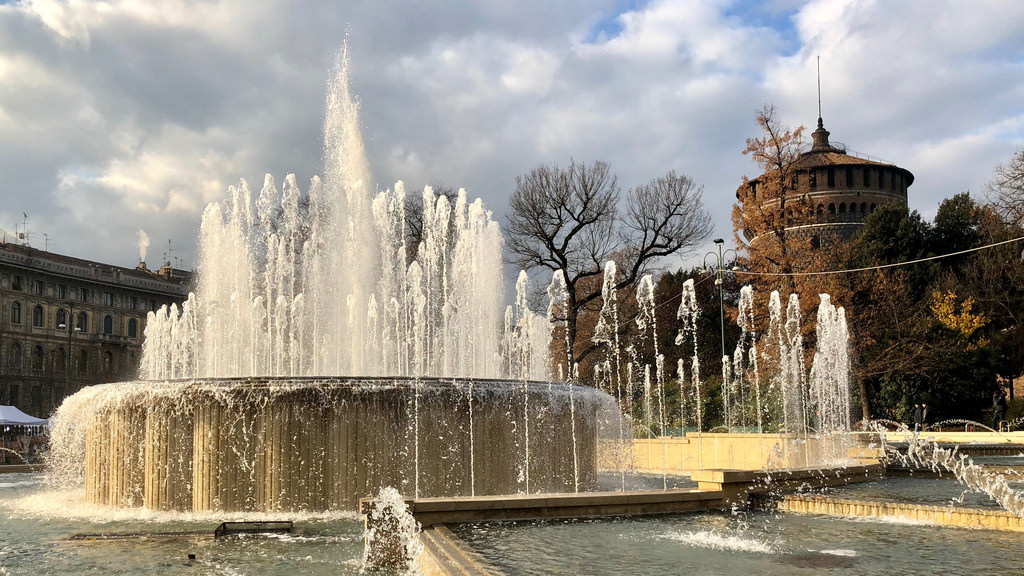The history of Milan is very interesting and complicated at the same time.
Milan and Lombardy, the region where the city is located, was ruled by Celts, Romans, Goths, Lombards, Spaniards and Austrians along the centuries. From 1450, it was ruled by the Sforza family, during the Renaissance period.
Under the Sforza the city began its development. Francesco Sforza transformed the city into a powerful metropolis. It was during these years that the Sforza Castle (Castello Sforzesco) and the Cathedral (Duomo) were being built. Another dominant person of this period was Ludovico Sforza, who improved the economy and the cultural heritage of the city. He was able to attract architects like Bramante and Leonardo da Vinci, transforming his court and the city into one of the most impressive and relevant cities in the history of the Italian culture.
The city belonged to the Spanish and to the French monarchies and was under Napoleon’s empire from 1796 to 1814. In 1859 it became part of the new Kingdom of Italy. The imposing town castle is located in the extension from the Milan’s cathedral – Via Dante – Largo Cairoli – Piazza Castello.

Sforza Castle
Milan’s castle was designed by Galeazzo II Visconti in 14th Century.
During the Renaissance period and it was built as a defensive castle. Throughout its history, the castle was destroyed and built up again modified. The castle houses the Museums of the Castello with rarities such as the last masterpiece of Michelangelo, the unfinished Pietà Rondanini and the frescoes by Leonardo da Vinci and Bramante.
Particularly impressive is the tower with the entrance Torre del Filarete, named after the Florentine architect and sculptor Antonio Averlino (called Filarete).
Leonardo Da Vinci and the Milan Castle
Leonardo Da Vinci worked from 1482 – 1499 and from 1506 -1513 at Milan’s Castello Sforzesco under the Duke Ludovico Maria, nicknamed Ludovico il Moro and took care of the cultural life and the arts in the mansion.
During this time, Leonardo also worked on the development and expansion of the system of canals – Navigli – and the construction of locks as well as the study of man.
Hosted inside the Castello Sforzesco, the Trivulziana Library can be accessed to examine incunabula and ancient documents from the 8th to the 18th century, parchments, records and prints. The library hosts the manuscript by Leonardo containing studies on military and religious architecture and a curious collection of real and imaginary portraits. A digital reproduction of the entire codex will enable visitors to leaf through the codex, page by page, magnifying the original up to 20 times.
In 1484 Ludovico il Moro commissioned Leonardo to design an enormous equestrian sculpture as part of a monument. A clay model of a horse which was to be used as part of the design was completed in 1492 – but the statue was never built. In 1999 the horse alone was cast from Leonardo’s original designs in bronze and placed in Milan outside the racetrack of Ippodromo del Galoppo.
The Park beside the Castle
 Parco Sempione can be accessed through its regal courtyards, the Corte grande, the Rocchetta and the Corte ducale. Inside the complex, in addition to the splendid collections of ancient and modern art and richly decorated furnishings, you can also admire Michelangelo’s Pietà Rondanini and the Sala delle Asse featuring an amazing vault decorated with frescoes designed by Leonardo da Vinci (currently undergoing restoration).
Parco Sempione can be accessed through its regal courtyards, the Corte grande, the Rocchetta and the Corte ducale. Inside the complex, in addition to the splendid collections of ancient and modern art and richly decorated furnishings, you can also admire Michelangelo’s Pietà Rondanini and the Sala delle Asse featuring an amazing vault decorated with frescoes designed by Leonardo da Vinci (currently undergoing restoration).
Nowadays, “Il Castello” houses a number of interesting museums and libraries. With Sforza Castle connected to Parco Sempione, it is a favorite weekend destination for young and old alike.
Did you like the post?
To Visit Milan just write at info@www.milanintour.com or
Call: +39 347 9478 826


